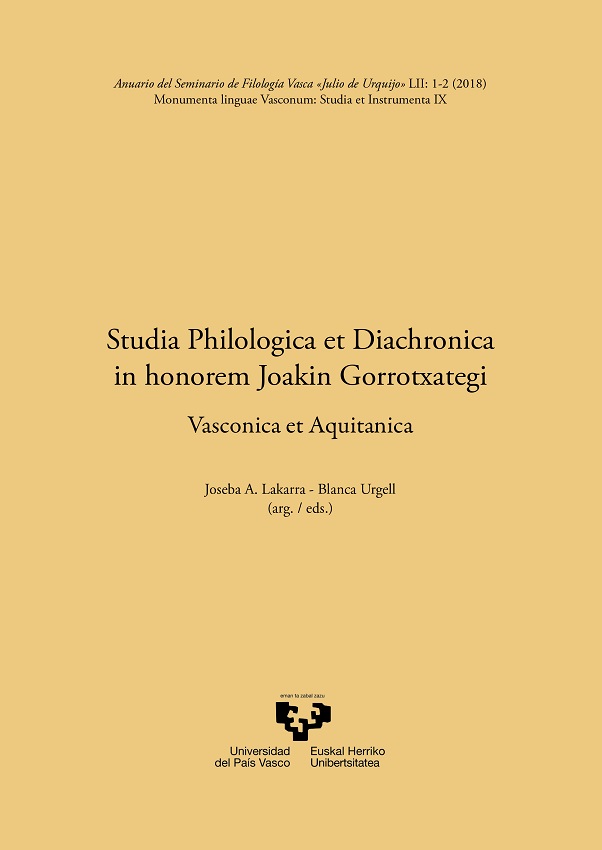La singularidad cultural del área pirenaico-occidental: dinámicas y persistencias entre la Edad del Hierro y la Época romana
##plugins.themes.bootstrap3.article.main##
##plugins.themes.bootstrap3.article.sidebar##
Argitaratua
2018-09-15
Eneko Hiriart
Laurent Callegarin
Philippe Gardes
François Réchin
Laburpena
It is not an easy task to study the «Basque-Aquitanian» area during the Antiquity. Fortunately, Joaquín Gorrochategui's research opened up a few new research routes to improve our knowledge of this area. From an archaeological point of view, both sides of the western Pyrenees have their own cultural specificity, which differs from their Gaulish, Iberian and Celtiberian neighbours. This paper focuses on two archaeological materials, ceramic and coinage, to better understand the cultural dynamics, the ethnic complexity and the evolution of the local populations, in between the Iron Age and the Roman period.
Nola aipatu
Hiriart, Eneko, Laurent Callegarin, Philippe Gardes, eta François Réchin. 2018. «La Singularidad Cultural Del área Pirenaico-Occidental: Dinámicas Y Persistencias Entre La Edad Del Hierro Y La Época Romana». Anuario Del Seminario De Filología Vasca "Julio De Urquijo" 52 (1/2):323-43. https://doi.org/10.1387/asju.20206.
##plugins.themes.bootstrap3.article.details##
Atala
Artikuluak
Lan hau Creative Commons Aitortu-EzKomertziala-LanEratorririkGabe 4.0 Nazioartekoa lizentzia baten mende dago.


